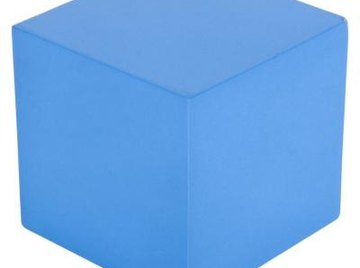
The volume of a three-dimensional solid is the amount of three-dimensional space that it occupies. The volume of some simple figures may be calculated directly when the surface area of one of its sides is known. The volume of many shapes may also be calculated from their surface areas.The volume of some more complicated shapes can be calculated with integral calculus if the function describing its surface area is integrable.
Let \"S\" be a solid with two parallel surfaces called \"bases.\" All cross sections of the solid that are parallel with the bases must have the same area as the bases. Let \"b\" be the area of these cross sections, and let \"h\" be the distance separating the two planes that the bases lie in.
Calculate the volume of \"S\" as V = bh. Prisms and cylinders are simple examples of this type of solid, but it also includes more complicated shapes. Note that the volume of these solids can be easily calculated no matter how complex the shape of the base is, so long as the conditions in Step 1 hold and the surface area of the base is known.
Let \"P\" be a solid formed by connecting a base with a point called an apex. Let the distance between the apex and base be \"h,\" and the distance between the base and a cross section that is parallel to the base be \"z.\" Furthermore, let the area of the base be \"b\" and the area of the cross section be \"c.\" For all such cross sections, (h - z)/h = c/b.
Calculate the volume of \"P\" in Step 3 as V = bh/3. Pyramids and cones are simple examples of this type of solid, but it also includes more complicated shapes. The base may be any shape so long as its surface area is known and the conditions in Step 3 hold.
Calculate the volume of a sphere from its surface area. The surface area of a sphere is A = 4?r^2. By integrating this function with respect to \"r,\" we get the volume of the sphere as V = 4/3 ?r^3.
About the Author
Allan Robinson has written numerous articles for various health and fitness sites. Robinson also has 15 years of experience as a software engineer and has extensive accreditation in software engineering. He holds a bachelor's degree with majors in biology and mathematics.
Photo Credits
Ablestock.com/AbleStock.com/Getty Images
